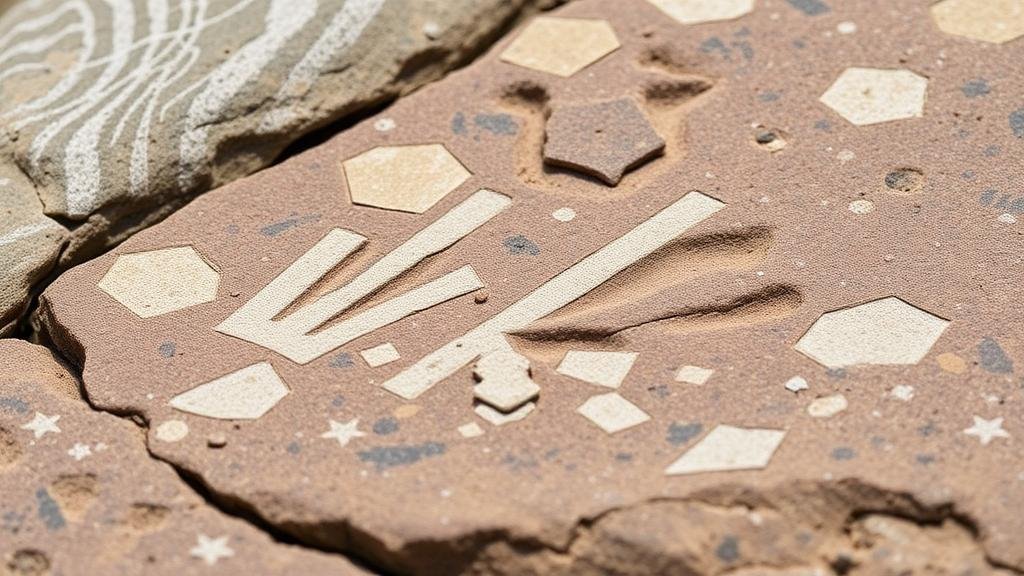Using Weathering Patterns on Rocks to Locate Man-Made Carvings or Markers
Using Weathering Patterns on Rocks to Locate Man-Made Carvings or Markers
Weathering patterns observed on rocks can be powerful tools in geological and archaeological studies. By applying principles of weathering processes, researchers can uncover hidden man-made carvings or markers that have otherwise been obscured over time. This article delves into how weathering affects rock surfaces, the methods used to identify human alterations, and the implications for locating historical artifacts.
Understanding Weathering Processes
Weathering refers to the breakdown of rocks and minerals due to environmental factors. e are two main types: physical weathering, where rock is disintegrated without chemical change, and chemical weathering, where chemical reactions alter the rocks material composition. Understanding these fundamental processes is crucial when studying how these patterns may indicate the presence of carvings.
Physical factors include:
- Temperature fluctuations: Repeated heating and cooling can cause rocks to expand and contract, leading to cracks.
- Water infiltration: Freeze-thaw cycles can create significant damage, as water seeps into cracks, freezes, and expands, prying the rock apart.
Chemical weathering involves reactions with water, acids, or oxygen, leading to:
- Dissolution of soluble minerals: This can create subtle indentations that could reveal etchings.
- Oxidation: The rusting of iron-bearing minerals can discolor rock surfaces, highlighting alterations, including carvings.
Identifying Man-Made Carvings Through Weathering Patterns
Man-made carvings may exhibit unique weathering patterns that differ from unaltered rock. One critical aspect in identifying these alterations is recognizing the characteristic signs of weathering around a carving versus a uniform rock surface. For example, carvings may retain moisture differently, leading to distinct discoloration.
Researchers often employ the following methods:
- Visual Inspection: Trained specialists can identify anomalies on rock surfaces, including changes in texture or color that may indicate human intervention.
- Photographic Analysis: High-resolution imagery and imaging techniques, such as infrared and ultraviolet photography, can enhance contrasts between weathered and unweathered areas.
Case Studies and Real-World Applications
An exemplary case of utilizing weathering patterns can be found at the ancient site of Petra in Jordan. Archaeologists have discovered carvings in sandstone that, due to natural weathering processes, blended into the surrounding landscape. By studying the weathering profiles and using specialized imaging technology, researchers identified previously unseen carvings that date back to the Nabataean civilization.
Another pertinent example is found in the markings left on ancient granite by indigenous peoples in North America. Teams studying these rock art sites have utilized weathering analysis to differentiate between natural erosional patterns and those caused by human factors. The detailed layering of discoloration can pinpoint where man-made markings exist, facilitating better preservation efforts.
Implications for Archaeological Research
The ability to locate man-made carvings using weathering patterns represents a significant advancement in archaeological and geological research. This method not only helps in identifying new sites but also plays a critical role in conservation. By understanding how weathered rocks may change over time, experts can implement better preservation strategies.
Also, the insights gained from studying these weathering patterns inform us about ancient human behaviors and cultures, providing an invaluable context to history. As a result, researchers gain a clearer picture of how societies interacted with their environments.
Actionable Takeaways
For those interested in applying weathering patterns to their own studies or explorations, consider the following:
- Familiarize yourself with the basic principles of weathering and how they can affect rock surfaces.
- Use imaging technologies to enhance the visibility of man-made carvings in field studies.
- Collaborate with experts in geology, archaeology, and conservation to improve accuracy and efficiency in locating carvings.
Through integrating the knowledge of weathering patterns and the careful study of our geological past, researchers can continue to uncover the rich tapestry of human history etched in the Earths stone.


